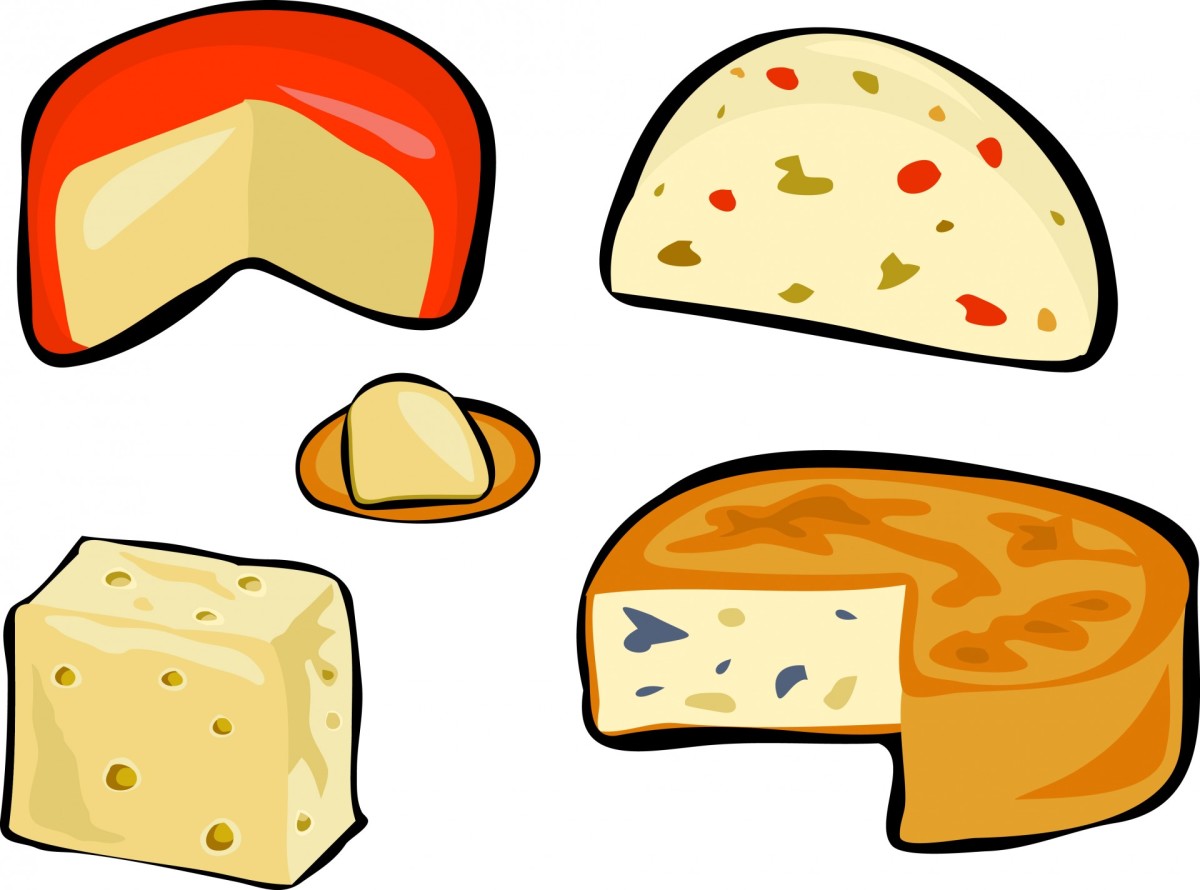The Medical and Moral Destiny of Incest.
Since the beginning of human-kind incest has been a factor in populations, and in the earliest years it must have been the sole contributing cause of population propagation. Offspring that were genetically crippled died young, and offspring that did not inherit the crippling gene mix survived, and thus over time passed on fewer and fewer of the crippling genes, until a more diverse mix was achieved.

Article Outine
1.) Incest in the News - Is incest increasing?
2.) The Controversial Reasons FOR Incest
3.) The Stigma of Incest: Reasons AGAINST It
4.) The Genetic Premise
5.) The Medical Future for Incest
Incest in the News
Are incestuous relationships on the rise? We've seen more and more in the news lately, so it seems the answer to this question is yes. I'm skeptical about it though because it seems the reporting may be the only thing on the rise, and today's media reports include anything and everything we never would have publicly discussed in the past.
Incest, just like homosexuality, is a topic that has been hushed, with relationships kept hidden, so no valid comparative data is actually available. And what is incest? For the purposes of this article, it only includes consensual relationships between adults, as I am not herein discussing familial rape. There are many definitions of it because it depends on the Degree of Kinship, aka Degree of Relationship, between the partners. After all, we are all related. The following table illustrates the mathematical relationship between related people on a genetic level.
Degree of Relationship
| Inbreeding Relationship
| % Relationship
|
|---|---|---|
o
| Identical Twins
| 100
|
1
| Parent with Offspring
| 50
|
2
| Full Siblings
| 50
|
2
| 3/4 Siblings (Sibling Cousins)
| 37.50
|
2
| Grandparent with Grandchild
| 25
|
2
| Half Siblings
| 25
|
3
| Aunt/Uncle with Neice/Nephew
| 25
|
4
| Double First Cousins
| 25
|
3
| Great Grandparent w/ Great Grandchild
| 12.5
|
4
| First Cousins
| 12.5
|
This genetic concept was developed by Sewall Wright in 1922. Relatedness is the Coefficient of the Relationship. Most [often] legally prohibited degree of kinship regarding incestuous relationships concern relations of r = 25% or higher (3 or 4 degr
To mention just a couple of stories that have been in the news, let's start with a First Degree case involving the relationship between Chalena Moody and her biological father Eric Lee Gates who both were living in Oregon. Mr. Gates reportedly did not raise his daughter. The two reconnected a few years ago, and have 2 children with a 3rd having died in utero. Both surviving children have numerous mental and physical impairments.
"Oregon law defines felony incest when the person marries or engages in sexual intercourse or deviate sexual intercourse with a person whom the person knows to be related to the person, either legitimately or illegitimately, as an ancestor, descendant or brother or sister of either the whole or half blood."
http://6abc.com/news/father-daughter-plead-guilty-to-felony-incest-/575511/

Another case I want to mention is about a rapper named Kevin Gates (No! No relationship to the above-mentioned Eric Lee Gates) who had a sexual relationship with his own cousin, not knowing they were kin for the first 3 months. From the reports I could not determine what kinship they had, whether they be first cousins, or double cousins, or what. If first cousins, then their percentage of relatedness was 12.5 which is less than the 25% relatedness many laws draw the line at. So legally it may not have been incest.

The Controversial Reasons FOR Incest
Now let’s dive into the more controversial issue of accepting incest, and the justifications for it that are recognized in many cultures worldwide. I found 3 main reasons people are promoting incest today: Blood-line, Religion, and GSA (Genetic Sexual Attraction).
GSA: “Genetic sexual attraction (GSA) is sexual attraction between close relatives, such as siblings or half-siblings, a parent and offspring, or first and second cousins, who first meet as adults.[1] The term was coined in the US in the late 1980s by Barbara Gonyo, the founder of Truth Seekers In Adoption, a Chicago-based support group for adoptees and their new-found relatives.” http://en.wikipedia.org/wiki/Genetic_sexual_attraction
Edvard Westermarck in his book The History of Human Marriage (1891) developed a theory that at first seems somewhat opposite to GSA. The theory is called the Westermarck Effect and it poses that people who develop close familial-type relationships early in life will lack a desire, or be opposed to, a sexual relationship between themselves later. He believed that it was natural animal instinct that developed over time to prevent inbreeding.
So it's not really opposite to GSA for sexual attraction purposes, in fact the two theories complement one another. The GSA theory proposes that a sexual attraction may be felt between parties that are closely related, but had no previous, or a very limited, emotional bond or relationship. The Westermarck Effect proposed that if people had a close emotional familial relationship early in life then the opposite of GSA would occur between themselves - they would grow apart sexually.
GSA is currently under debate and stirring a huge interest in the scientific study of such. Many people have accepted it as a valid reason for some cases of incest because people sharing the same genes, and thus traits, would therefore naturally have a lot in common in life i.e. lifestyle, interests, etc.
As for Blood-line Preservation and Religious Purity, incest is often an integral requirement. Royal families throughout history have practiced some degree of incest in order to preserve their bloodlines. The British Royal Family is most famous today for this, but other imperial families followed similar traditions including King Tut in Egypt who was a product of royal incest and then also married his own sister.
Well established American-based religions have sects that practice incest, i.e. the Mormons and the Amish. Often enough, bloodline preservation and religious purity go hand in hand.

The Stigma of Incest: Reasons AGAINST It
- First and foremost is the increased medical risk of any offspring to suffer from physical and mental abnormalities.
- Second is the financial burden on society (taxpayers) to care for mal-affected offspring.
- Third is the general moral abhorrence. Incest has an emotional stigma in our modern culture, just as homosexuality once did.
Let's dive into Moral Abhorrence first since I will keep this discussion short. The source of this abhorrence is also presently under debate as to whether it's a learned moral, or whether it's inherent, as in the Westermarck Effect. Is it something that developed in our system of morals, or is it instinctual in order to prevent inbreeding?
Many people look at incest between consenting adults as a victimless crime. But as we know, offspring arising from incest have a higher risk of abnormalities in their form and function. In that respect, it is not victimless.
But what about homosexual incest? In researching this article, I didn't find anything dealing with this specifically. Homosexual incest would not produce any offspring and therefore is victimless. Homosexuality was long abhorred by "straight" society but more and more discussions of such opened up, and now it's pretty much accepted socially.
Is homosexual incest an acceptable form because no offspring will result?
The increased medical risk of any offspring to suffer from physical and mental abnormalities has an enormous impact with respect to the stigma of incest. The case of the sexual relationship between Chalena Moody and her father Eric Lee Gates exemplifies the impact of this unfortunate malady. She gave birth to 2 children who will suffer their entire lives because they inherited a matching pair, or pairs, of deliterious genes. People need to understand, and care, that if they risk making these combinations happen by having sexual intercourse with a relative and thus conceiving a child, the child could suffer immensely from resulting illnesses, deformities, or death.
Our modern culture is much more sensitive to suffering. In the olden days when a family gave birth to an unhealthy child, people around the family felt sympathy but had very little to give that could help. It was a problem contained mostly within that family, and with a lack of appropriate resources, the child would eventually die.
Today, even though our modern society is not as tightly knit as societies of the past when people lived in small and/or isolated neighborhoods, like villages, we do have more resources and a heightened emotional connection to suffering. Therefore we intervene in difficult situations in ways people of yore could not imagine possible. We have public health, schools, police, even the Humane Society at our disposal to help intervene with us and assist the suffering.
The social distaste for incest does have roots in the medical consequences, and those consequences are widely known even among those not formally educated. Regardless, there remain people who have limited abilities and can't comprehend this subject, and those people should not be ostracized. Whether or not people who have been implicated in this problem should be prosecuted, or otherwise held liable, is not the subject I am pursuing.
The last argument I found against incest is that of the financial burden on society. The medical argument and the financial argument both have substantial integrity. It's not that incest is solely responsible for the the medical consequences and related financial costs of having unhealthy offspring, Oh no, no. In fact, most babies with these genetic physical and functional abnormalities are born to parents who are not incestuously related. It's merely a genetic luck of the draw. The problem with offspring created through incest is that they have a much, much higher risk of inheriting the bad gene pairs.
The Genetic Premise
To understand why incest can produce offspring with severe abnormalities, it’s necessary to understand how they are produced genetically. People who are closely related share similar, and maybe identical genes. All of us carry some genes that are known as recessives which are hidden from apparent view. We all carry 2 genes for each trait. Our eye color is a trait. You can have brown eyes though you have a gene for blue eyes, as well as the gene for brown eyes. The blue eyes don’t appear on you because the other gene, the one for brown eyes, is more dominant. This is known as Gene Expression.
Gene Expression is difficult to understand but can be simplified as follows:
1.) Everyone has 2 copies of every gene these copies being known as alleles.
2.) Each copy of the gene is considered either dominant or recessive. I think of them like people, one being a big mouth bully (Big “D” for dominant) and the other being shy and quiet (Little “d” for recessive).
3.) When you are born you have received one copy of each of your mother's genes, and one copy of each of your father's genes. Each gene copy is either dominant (big "D" indicates dominant) or recessive (little "d" indicates recessive) for a particular trait. These genes from your mother and father pair up, and the possible combinations for one of these pairs is D-D, D-d, or d-d.
4.) If you received 2 Dominant copies then you will express the dominant trait. If you received 2 recessive copies then you will express the recessive trait. BUT if you receive one dominant gene and one recessive gene, then the dominant gene will stand out and you will express that trait. The recessive gene will not show.
Dominant genes generally prevail in populations and recessive ones are often hidden or blocked by the dominant ones. But when you inherit only the recessive copies - a recessive gene copy from your mother, and the same recessive gene copy from your father, then the recessive traits will be expressed. This is fine for most genes, but when the 2 copies (alleles) together express something unhealthy (known as a deleterious trait) they can cripple or even eventually kill you. Unfortunately, it’s the recessive genes that normally carry abnormalities.
The Medical Future of Incest
Genetics is a rapidly growing field, especially that of genetic therapy. In the 1990s there were 2 types of therapy being scientifically pursued: one was called Germinal Cell Gene Therapy, and the other was called Somatic Cell GeneTherapy. "Germinal cell gene therapy [was] performed successfully in several animal studies, and [involved] the insertion of a healthy gene into the fertilized egg of an animal that has a specific genetic defect." http://www.ndsu.edu/pubweb/~mcclean/plsc431/students/zhou.html
Because it involved germinal cells, which are embryonic and behave differently than our developed cells (somatic cells), performing tests on human germinal cells was banned. It's important to understand that this type of therapy would change an individual's DNA and could therfore be passed to future generations arising from that individual. Somatic cell gene therapy is done in a different way, and does not involve changing an individual's DNA.
Instead of inserting a gene directly into a cell, like into an embryo, somatic cell gene therapy uses a virus to "infect" our cells with the desired gene. Because viruses replicate within our cells, but do not alter our cells' DNA, they are used as vectors to transport genes into our cells. So viruses were used to "infect" people with improved genes.
Because some side effects were found to occur with the somatic cell gene therapy, science has continued to pursue other methods. The newer methods are similar in that they still use viruses as vectors to transport the better genes. The difference now is that scientists have discovered a way to also remove the sections of DNA that contain the deliterious genes. So instead of just adding good genes to cells, they are now replacing the bad genes with the new good genes.
So with medical advancements in genetic therapy, what is the future of incest; where are we going?
As stated earlier hereinabove, most babies with these genetic physical and functional abnormalities are born to parents who are not incestuously related. It's merely a genetic luck of the draw. It's because of the needs of the majority that science is advancing. A great deal of scientific study is privately funded by individuals and companies investing on a speculative basis. A great deal is also funded by government grants.
It's not really the research, but more the present cost of caring for those afflicted by these genetic maladies that taxpayers recognize most often. It's not that taxpayers on a whole would deny the suffering, quite the contrary; we are more sensitive than people have ever been historically to suffering. But recognition of the higher risk, and the perception that this risk is avoidable, does anger many.
So science moving forward, with no regard to incest, will eventually lead to a relatively lesser financial impact on taxpayers. It will also lead to less suffering on the part of the offspring from incestuous sex. So, my main question remains: what really is the future of incest? Will the stigma eventually disappear?






